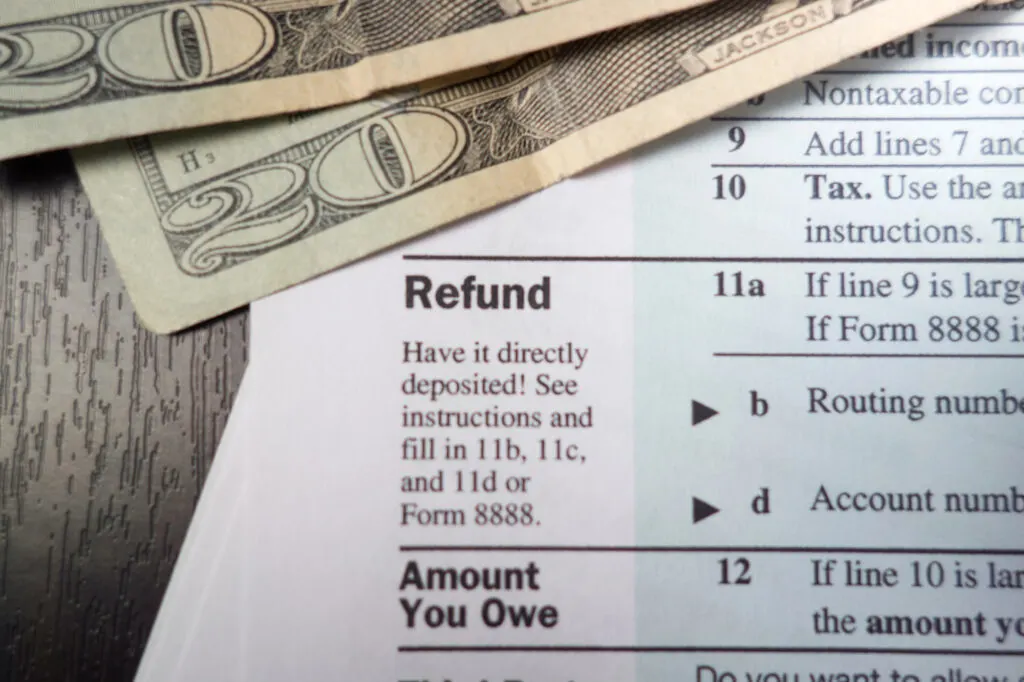Understanding Tax Filing Start Dates
As someone who’s navigated the labyrinth of tax season more than once, I’ve learned that timing is everything. The IRS usually flags off the tax filing season in late January. Knowing exactly when the gates open is a game-changer—it’s the difference between a sprint and a marathon. It means you can hit the ground running with all your tax forms—like that W-2 form or 1099 from your gig as an independent contractor—primed and ready.

Imagine the early filers: they get bragging rights to quicker tax refunds, courtesy of direct deposit. It’s like an express lane where your social security number is your VIP pass. And for those who owe the federal government, knowing the due date gives that critical wiggle room to strategize. Whether you’re a tax professional or doing it solo, that head start translates into better tax planning and possibly wrangling more from deductions—like the earned income tax credit.
Getting a bead on the tax day kick-off also undercuts the last-minute frenzy. Instead of being swamped by the April filing deadline, you’re coasting, confident your federal income tax return is on point. And if you’re an independent contractor, being punctual helps fortify your taxable income against any mishaps that might demand an amended return.
Key Takeaways:
- Efficient Tax Planning: Early knowledge of the tax season’s start is a catalyst for meticulous tax planning.
- En Route to Refunds: Identifying start dates clears the track for early filing, racing you toward a faster tax refund via direct deposit.
- Strategic Agility: Awareness of due dates offers a strategic edge, affording additional time for maximizing credits and deductions.
Gathering Essential Tax Documents Early
Oh, the thrill of the hunt – except instead of the wild, it’s paperwork sprawl I’m rifling through. There’s an art to snagging those W-2s and 1099s; think of them as the crown jewels of taxes. These elusive creatures hold the secrets to my taxable income and with the filing deadline lurking around the corner, time is of the essence. I’m like a detective piecing together a financial puzzle, and every deduction receipt is a clue to unlock potential savings on my federal tax returns. The sooner I have these documents in hand, the quicker my tax preparer, or my trusty tax software, can weave them into my federal income tax return.
Now, calling in those forms from employers and clients needs a healthy dose of persistence – especially from independent contractors. As for those receipts that prove my energy credits and earned income tax credit eligibility, they’re as golden as the late January light – crucial for trimming down what I owe to the federal government. Like I always say, filing taxes without these papers is like trying to bake a cake without eggs – sure, it can be done, but good luck getting it to rise.
So, for anyone who hasn’t started the paper chase yet, consider this your firing pistol. Getting the paperwork sorted is not a last minute sprint; it’s a tax season marathon, and procrastination is the cramp you really don’t need.

Benefits of Creating an IRS Online Account
Setting up my IRS Online Account, I’ve unlocked a treasure trove of perks that have truly streamlined my tax dealings. Suddenly, tax forms, from W-2s to those pesky 1099s, are right at my fingertips, making my tax prep smoother than ever. The administrative wizardry doesn’t end there; electronic signatures have become a godsend, especially when I’m crunched for time and need to get documents over to my tax professional without the usual runaround. And then there’s the power of attorney authorizations—I can now maintain control over who has access to my personal information and tax records. It’s almost like having a virtual tax concierge!
This nifty IRS portal isn’t just about convenience; it’s about taking charge of my federal income taxes in a proactive way. I no longer have to fear the looming tax season. Instead, I embrace it, armed with a digital toolbox that makes the entire process less daunting. No more last-minute scrambles to find documents or panicking over lost mail. And when tax day is upon us, I can file with confidence, knowing that I have all my ducks in a row—and all thanks to the simplicity and security of my IRS Online Account.
A Guide to Electronic Filing and Direct Deposit
Embracing the digital leap, I opted for electronic filing linked with direct deposit—a savvy move, if you ask me. No more twiddling thumbs by the mailbox or risking a paper cut; my tax refund beams straight into my bank account. It’s akin to ordering online with next-day delivery—only this time, it’s my hard-earned cash making a grand entrance.
You’d think setting up this financial express lane requires some form of wizardry, but it’s simpler than making a cup of Joe. First, gather your routing and bank account numbers, ensuring accuracy like a proofreader scouring for a missed comma. Come tax time, elect the direct deposit option when you file electronically, entering the numbers like precise coordinates for a lunar landing.
Then, kick back; no need for pacing when you’re in the fast lane. Direct deposit transactions make their way swifter than a hawk in full dive, sidestepping the roadblocks and delays of a paper return. Professional tax preparers swear by it, and even those who self-file find this path smooth as silk—no expertise in rocket science required. And, if you’re counting the benefits—add security and peace of mind to the list. Direct deposit eliminates the gambles of snail mail, ensuring your refund arrives safely, with the promptness of an athlete at the starting block.
How Soon Can I File my 2023 Tax Return?
The IRS recently announced that the official 2024 tax filing season will kickoff on Monday, January 29, 2024. This means the IRS will begin accepting and processing tax returns as of January 29, 2024 if you’d like to get an early start on submitting yours.

Deadlines and Due Dates for Tax Year 2023
I’ve circled it on my calendar and you should too—the due date for filing our federal tax returns for the 2023 tax year is Monday, April 15, 2024. Although, since procrastination isn’t my style, I plan to beat the rush and ensure I hit that deadline with room to breathe. Missing it could mean penalties or, even worse, delaying that sweet tax refund.
As for independent contractors like myself, or anyone juggling quarterly payments, the last estimated tax payment for 2023 (Quarter 4) is due on January 31, 2024. Getting these payments right is like aiming for a moving target, but hitting it means no unpleasant surprises come Tax Day.
Ever thought about an extension? I’ve mused over it on occasion. If the unthinkable happens and I need more time, there’s a bit of breathing room—a tax extension could shift my deadline to October 15, 2024. Just got to remember to file IRS Form 4868 before April 15. Keep in mind though, the extension grants extra time for filing, not for paying. Miss that boat and the federal government could charge interest on the amount owed.
To help keep you on track, I tend to stick a Post-it note on my fridge as a daily reminder of these dates—it’s quirky but effective. And of course, adhering to these deadlines means I won’t be part of the last-minute crowd trying to cram a year’s worth of tax activity into their tax forms in early April. That’s an all-nighter I’d gladly skip.
Strategies for Maximizing Tax Credits and Deductions
Digging through the mountain of receipts and documents, I discover untapped goldmines in the form of tax credits and deductions, eagerly waiting to bolster my tax savings. Among the newest treasures, I find energy-related tax credits particularly sparkling this tax year. Say, for example, I’ve installed solar panels on my roof, or recently upgraded my windows for better insulation; these changes are not just great for Mother Earth—they’re fantastic for my wallet, too, assuming I claim those energy credits. I’m also poring over other deductions, mindful that expenses like home office costs or educational material could reduce my taxable income, benefiting me the way a well-played chess move benefits the strategy-savvy player.
Now, when it comes to the beautiful labyrinth of deductions, I’m strategic. I hoard those bits of paper that most toss away – charitable donation receipts, medical bills, even the loan interest papers. Maximizing deductions is akin to a superhero assembling their gear; every piece strengthens the stance against the formidable adversary called the tax bill. I consult my tax professional, armed with a precise list of my adventures in spending and saving. Together, they spot deductions that I skipped, cementing my status as an early filer with wisdom far beyond my spreadsheet skills.
Crunching numbers, I marvel at how these strategies align with the federal government’s incentives, carving out a clearer path to a plushier tax refund. And isn’t that what it’s all about? This isn’t just about saving a few bucks; it’s the crescendo of a year’s worth of savvy financial decisions, culminating in a fatter bank account post-tax season, thanks to a well-executed tax strategy.
Winding Down with Smart Tax Planning
Let me give it to you straight. You’ve got the insights, the deadlines, and the savvy tax strategies all at your fingertips. What’s next? Taking a breath and a moment to ensure you’re carving out the smartest path for your finances as the year wraps itself up. Adjust your glasses and grab that calculator; we’re about to make some smooth moves in the tax game.
Getting ahead of the game means more than just ink on forms—it’s about knowing the ins and outs of your taxable income and leveraging every credit to your advantage, especially those delightful energy-related ones. I mean, it’s not just about wearing green on Earth Day; let’s snag those greenbacks while we’re at it!
Head down to that home office or kitchen table and pour over those W-2s and 1099s. Remember, digital is the way forward, and the IRS concurs with their love for electronic returns. Direct deposit? Absolutely. Get those funds in your bank account faster than you can say “IRS Free File.”
Now, while I hover over the ‘send’ button on my federal income tax return, allow me to remind you: don’t dial down on the diligence. Chart out those quarterly payments now and avoid the unwelcome rush when early January hits. I cannot stress enough how a little prep today sparks a far less frenzied tomorrow.
Pro tip: Keep your social security number, personal information, and tax documents under lock and key—cyber-savvy is the new street-smart. And if you’re pondering about that tax expert panache, it’s like having a secret weapon—secure one early.
As we zoom out, clasp those takeaways close and remember—early birds don’t just get the worm; they get peace of mind and maybe an extra slice of pie with that tax refund.
